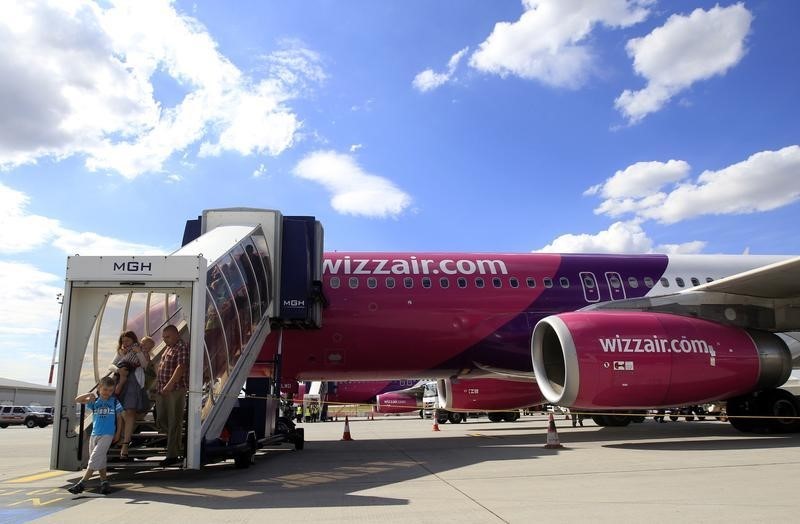Wizz Air shares drop 6.8% amid slower fleet delivery growth

Investing.com — Wizz Air shares dropped 6.8% on Wednesday following the release of its September 2024 traffic figures. The company also held its Capital Markets Day.
The low investor sentiment was likely driven by concerns surrounding a decline in load factors in September, as well as fleet growth and profitability challenges.
In its September traffic update, Wizz Air reported carrying 5.76 million passengers, marking a 3.9% year-on-year increase, while seat capacity rose 4.8% to 6.28 million.
The airline’s load factor fell slightly to 91.7%, down from 92.4% the previous year. Despite the Pratt & Whitney engine-related groundings impacting capacity, the company achieved its strongest passenger growth rate of the year.
However, Wizz Air’s Capital Markets Day highlighted some concerns for investors.
According to a note from Morgan Stanley, while the airline’s long-term growth outlook remains positive, fleet deliveries are expected to be slower than anticipated.
The bank said the company projects a fleet growth rate of 15% for FY25-28, lower than the contracted rate, but still expects 25% seat growth during the period.
“One of the key concerns investors have for Wizz is the pace of growth. The company noted that while its contracted fleet does imply a significant ramp up in capacity in the next 3 years (19%, 27% including 40-45 planes re-entering the fleet), slow delivery of aircraft means its expected fleet growth is lower,” wrote Morgan Stanley.
The company also acknowledged a potential 4.5 percentage point hit to FY25 profit margins from indirect costs related to engine issues and other operational challenges.
Additionally, Wizz Air signaled a potential shift toward a blended aircraft financing model, balancing ownership with leasing.
While Wizz Air remains focused on growth in Central and Eastern Europe, investors appear cautious, leading to the drop in share price. According to Morgan Stanley, the slowdown in fleet growth and rising costs could pressure margins in the near term.






